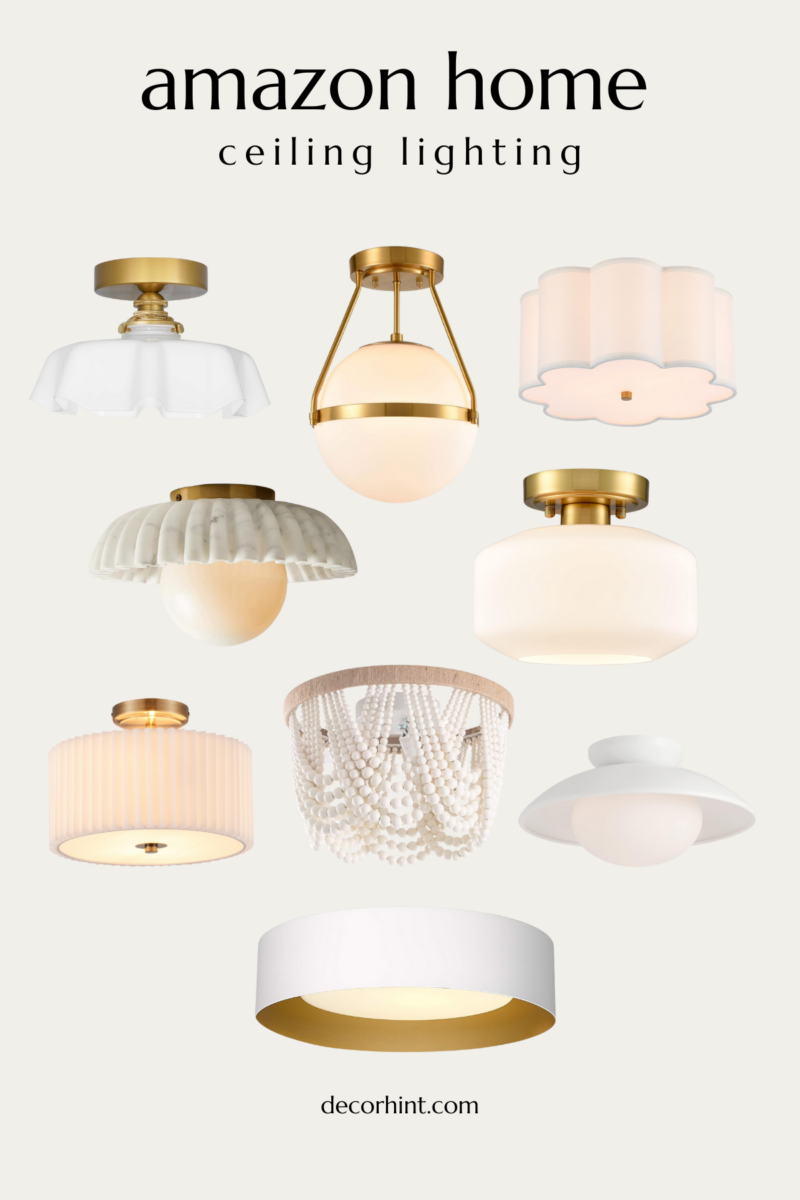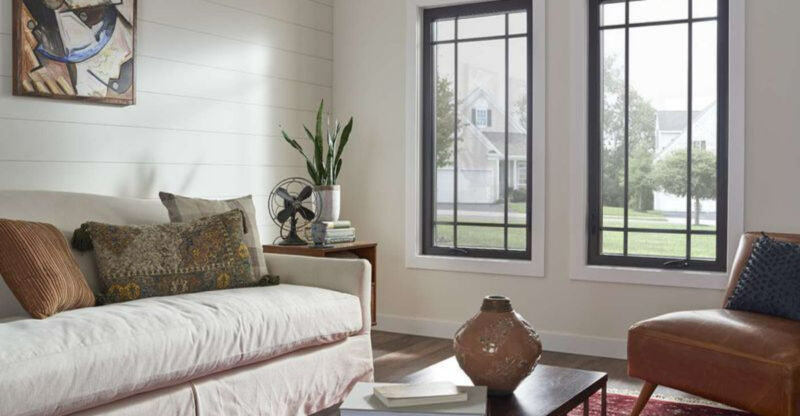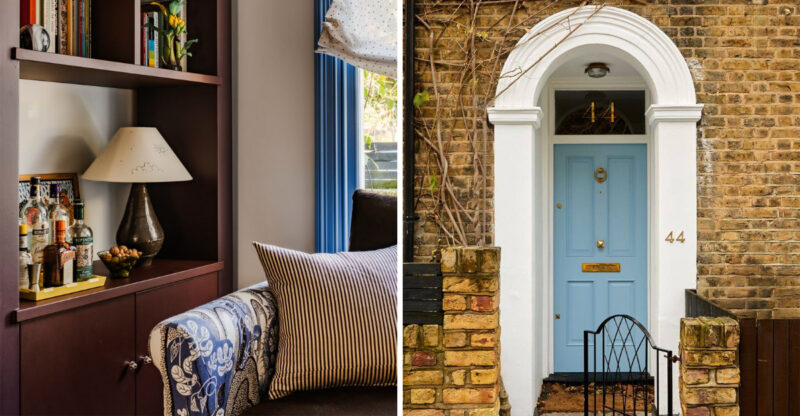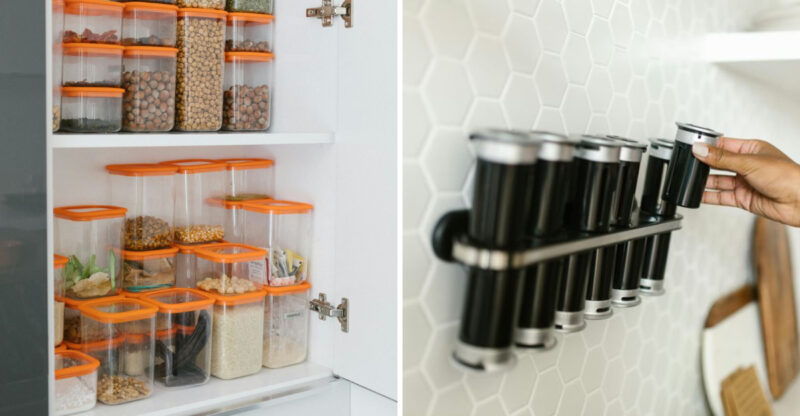15 Classic Brownstone Details In New York That Should Still Impress
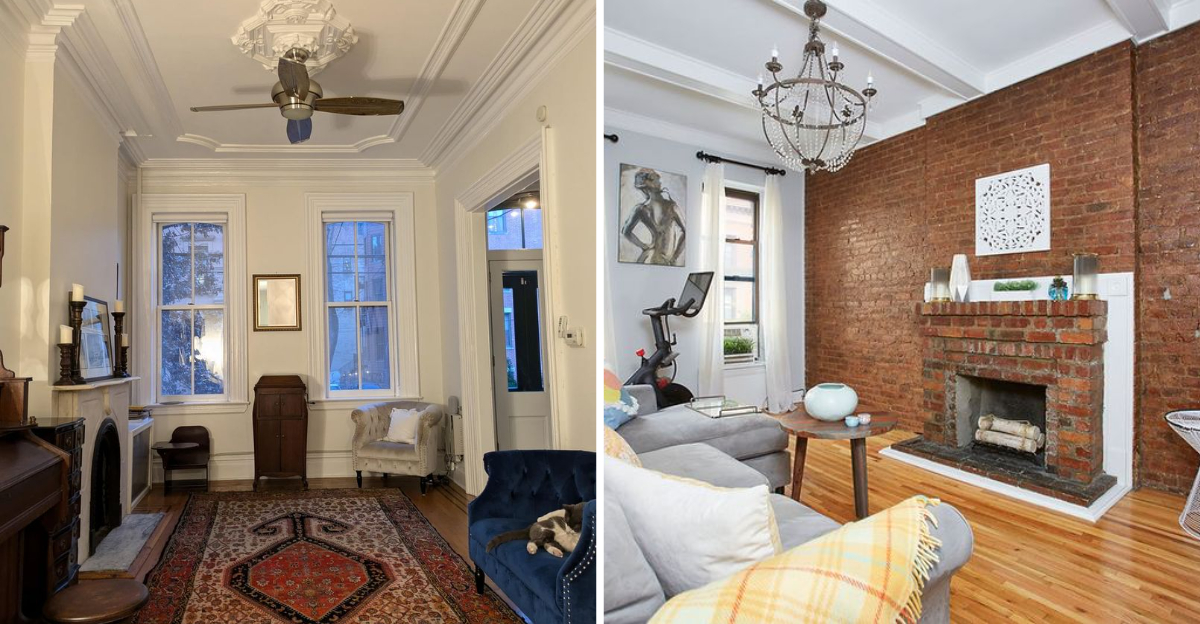
Walking through New York’s historic neighborhoods feels like stepping back in time, especially when you’re surrounded by classic brownstones.
These iconic row houses, built primarily between 1870 and 1910, showcase craftsmanship that modern builders rarely attempt.
The distinctive reddish-brown sandstone facades might catch your eye first, but it’s the interior details that truly reveal why these homes remain architectural treasures worth preserving.
1. Ornate Crown Molding
Looking up in a classic brownstone often reveals the most exquisite ceiling borders you’ll ever see. Hand-carved crown moldings feature intricate patterns of leaves, flowers, and geometric designs that frame rooms like artwork. Craftsmen spent weeks perfecting these plaster masterpieces.
Most impressive are the medallions surrounding light fixtures, sometimes spanning three feet across with layers of detailed ornamentation. These weren’t mass-produced but carefully crafted on-site.
When renovating, homeowners discover these moldings were originally highlighted with gold leaf or contrasting paint colors. Restoring them properly requires specialized artisans who understand traditional techniques a dying skill that makes authentic crown molding even more valuable in today’s brownstones.
2. Fireplace Mantels
Marble mantels stand as the crown jewels in many brownstone parlors. Carved from single slabs of Italian or Vermont marble, these statement pieces often feature classical motifs like columns, scrollwork, and sometimes even faces or mythological figures.
The hearths themselves tell stories of countless New York winters. While many fireplaces no longer function due to sealed chimneys, their decorative cast iron summer covers remain, showcasing elaborate Victorian patterns that protected the fireplace opening when not in use.
What makes these mantels truly special is their proportions typically taller and more imposing than modern versions. Some brownstone owners discover original mantels hidden behind walls or stored in basements during mid-century renovations, creating opportunities for authentic restoration.
3. Hardwood Floors
Beneath worn carpets and linoleum, many brownstone owners discover treasure original hardwood floors laid by master craftsmen over a century ago. These aren’t your standard planks but intricate parquet patterns featuring geometric designs or borders of contrasting woods like walnut, oak, and sometimes exotic imports.
The quality becomes immediately apparent in the tight-fitting joints and hand-cut pieces. Most impressive are the medallion centerpieces in formal parlors, where different wood species create stunning starburst or compass patterns.
Unlike modern flooring, these hardwoods were typically quarter-sawn, meaning they were cut to reveal the most stable and beautiful grain patterns. This technique explains why 100-year-old brownstone floors can be sanded and refinished repeatedly, still maintaining their structural integrity and distinctive character.
4. Stained Glass Windows
Hidden gems often appear above doorways or in stairwells of classic brownstones stunning stained glass windows that transform ordinary light into colorful displays. These aren’t the religious scenes you’d find in churches but rather Victorian-era designs featuring floral motifs, geometric patterns, and sometimes family crests or house numbers.
The craftsmanship reveals itself in the hand-cut glass pieces, which often include special textured or jeweled glass elements that create depth. Morning sunlight streaming through these windows casts rainbow patterns across interior walls, creating a magical atmosphere unique to these historic homes.
Though many brownstone stained glass windows were removed during modernization efforts, architectural salvage companies now sell restored pieces at premium prices. Finding an original intact window is considered a major architectural windfall for brownstone owners.
5. Wainscoting Panels
If walls could tell stories, brownstone wainscoting would narrate tales of elegant dinner parties and historical conversations. These wooden wall panels typically rise 3-4 feet from the floor, featuring recessed or raised designs that add dimension to dining rooms and hallways.
The craftsmanship becomes evident in the joinery corners meet perfectly, and each panel shows careful consideration of proportion. Many brownstone wainscoting installations include a chair rail cap and baseboard that frames the paneling into a cohesive architectural element.
What truly sets historic wainscoting apart is the quality of lumber used. Old-growth hardwoods with tight grain patterns provided stability that prevented warping over decades. When you run your hand across authentic brownstone wainscoting, you’re touching wood that might have started growing before the American Revolution.
6. Decorative Stair Railings
Ascending a brownstone staircase means gripping history ornate banisters and balusters crafted when stairways were considered architectural showcases. The newel posts often steal the show, sometimes standing four feet tall with carved details, fluted columns, and decorative caps or finials.
Cast iron balusters create rhythmic patterns between wooden railings, featuring scrollwork designs that reflect popular Victorian aesthetics. Each baluster was individually secured, creating a rock-solid structure that has withstood generations of use.
The most impressive brownstone stairs incorporate a graceful curve or spiral, requiring specialized woodworking skills to create flowing handrails that turn corners smoothly. These curved sections represent the highest level of stair-building craftsmanship a three-dimensional puzzle of wood that remains both functional and beautiful after more than a century of daily use.
7. Built-In Bookcases
Hidden doors, secret compartments, and library ladders brownstone built-ins offer more than mere storage space. These floor-to-ceiling wooden masterpieces often flank fireplaces or line entire walls, creating instant architectural character that modern homes rarely achieve.
The craftsmanship reveals itself in the details: dovetailed drawers, leaded glass cabinet doors, and carved moldings that match other woodwork throughout the house. Many feature adjustable shelving systems designed long before modern hardware, using clever wooden pegs that slide into precisely drilled holes.
Unlike today’s prefabricated cabinets, these built-ins were constructed on-site by carpenters who customized each element to fit the space perfectly. The wood itself tells stories quarter-sawn oak or mahogany with rich patina developed over decades of use, creating warmth that new construction simply cannot replicate without the passage of time.
8. High Ceilings
Stepping into a classic brownstone parlor feels like entering a different era largely because your eyes are drawn upward to ceilings soaring 11 to 14 feet high. This generous vertical space wasn’t just for show but served practical purposes in the pre-air conditioning era, allowing hot air to rise above the living space.
The proportions create a sense of grandeur that modern construction rarely attempts. Tall windows complement these ceilings, often reaching nearly floor-to-ceiling height to maximize natural light and airflow.
What makes brownstone high ceilings particularly special is their careful scaling doorways, moldings, and window casings all increase in size to maintain visual harmony. When standing in these spaces, you experience the perfect balance that comes from architectural designs created when craftsmanship mattered more than construction speed.
9. Window Seat Nooks
Tucked beneath bay windows in many brownstones, you’ll discover the most charming reading spots in New York. These built-in window seats often conceal storage compartments beneath hinged lids practical solutions for urban living long before professional organizers existed.
The craftsmanship appears in the woodwork surrounding these nooks paneled sides, decorative brackets, and sometimes even hidden drawers built into the framing. Many window seats align perfectly with radiators, creating cozy winter perches where generations have watched snowfall on Brooklyn streets.
Though simple in concept, these architectural features required skilled carpentry to integrate seamlessly with the window framing and interior trim. The best examples include original cushions with springs and horsehair stuffing beneath worn velvet or brocade textiles that have witnessed decades of New Yorkers gazing out at their changing neighborhoods.
10. Original Doors With Hardware
Weighing nearly 100 pounds each, solid wood pocket doors in brownstones slide effortlessly on brass hardware that’s survived over a century of use. These massive dividers often 9 feet tall feature raised panels, hand-carved details, and sometimes leaded glass inserts that filter light between rooms.
The hardware tells its own story of craftsmanship: ornate brass doorknobs, backplates featuring intricate patterns, and mortise locks with mechanisms still functioning perfectly after thousands of uses. Even hinges received artistic treatment, with decorative finials that transform functional elements into small sculptures.
Perhaps most impressive are the original skeleton keys that still operate these locks unique to each door and crafted by locksmiths who considered their work both security and art. Finding a brownstone with its original door hardware intact is increasingly rare, making these architectural elements particularly valuable to preservationists.
11. Exposed Brick Walls
Beneath layers of plaster and wallpaper, many brownstone renovators discover walls with stories to tell original brick laid by masons in the 19th century. These aren’t the uniform, machine-made bricks of today but handcrafted clay blocks with slight variations in color, texture, and size that create visual depth.
The craftsmanship reveals itself in the mortar joints narrow, precisely aligned rows that have held firm for generations. Some walls feature arched details over doorways or decorative patterns created by alternating the brick orientation.
What makes brownstone brick particularly special is its patina subtle discoloration from coal heating, occasional scorch marks from old stoves, and sometimes even faint pencil marks from the original builders. When properly restored, these walls connect modern dwellers directly to the hands that built New York, creating an authentic character that new construction simply cannot replicate.
12. Chandelier Fixtures
Dangling from ornate plaster medallions, original brownstone chandeliers transform from mere light sources into historical artifacts. Many began as gas fixtures before being converted to electricity, revealing their age through dual-purpose arms designed for both flames and bulbs.
The craftsmanship appears in hand-cast brass or bronze bodies with intricate details acanthus leaves, scrollwork, and sometimes even mythological figures. Crystal pendants catch light in ways that modern reproductions rarely achieve, using hand-cut prisms that create rainbow spectrums across walls and ceilings.
The weight alone impresses modern observers some fixtures exceed 75 pounds, requiring substantial ceiling supports hidden within original plasterwork. When brownstone owners restore these chandeliers, they often discover maker’s marks from forgotten New York metal foundries, connecting these functional artworks to specific craftsmen who shaped the city’s architectural character during its formative years.
13. Bay Windows
Jutting outward from brownstone facades, bay windows create the most coveted interior spaces in these historic homes. These architectural features aren’t just beautiful from outside but transform interior rooms by capturing three different light angles throughout the day.
The craftsmanship becomes evident in the joinery complex angles where wooden window frames meet require precision that modern builders rarely attempt. Many bay windows feature built-in seating or storage beneath, maximizing functionality in these space-efficient homes.
What truly distinguishes brownstone bay windows is their glass often original wavy panes that subtly distort views, creating a dreamlike quality as you watch the neighborhood through glass manufactured using techniques abandoned a century ago. These imperfections aren’t flaws but physical evidence of hand-crafted materials that connect residents to the historical continuum of New York’s architectural evolution.
14. Pocket Doors
Vanishing into walls with silent precision, brownstone pocket doors represent a space-saving innovation that predates modern sliding systems by over a century. These massive wooden panels often weighing over 100 pounds glide effortlessly on brass hardware hidden within interior walls.
The craftsmanship becomes apparent when examining the doors themselves typically featuring raised panels, hand-carved details, and sometimes stained glass inserts that allow light to flow between rooms even when closed. Many brownstone pocket doors come in pairs, creating grand 8-foot openings between parlors.
What makes these architectural elements particularly impressive is their engineering complex pulley systems and brass tracks that continue functioning smoothly after decades of use. Finding a brownstone with original pocket doors intact is increasingly rare, as many were sealed within walls during mid-century renovations when open-concept living became fashionable.
15. Period-Style Radiators
Cast iron behemoths weighing hundreds of pounds, Victorian radiators in brownstones aren’t just functional heating elements but sculptural works of industrial art. Their elaborate surfaces feature relief patterns of scrollwork, floral designs, and sometimes even faces or figures details largely invisible beneath layers of paint.
The craftsmanship reveals itself in the casting quality crisp details and perfectly fitted sections joined with threaded connections that have remained watertight for generations. Many feature decorative feet resembling lion paws or classical columns that elevate these utilitarian objects to furniture status.
Most impressive are the radiator covers found in formal rooms custom-built wooden enclosures with metal grilles that transform heating elements into architectural features. These covers often incorporate marble tops that served practical purposes, providing humidity when water vessels were placed atop the warm surface during winter months when indoor air became uncomfortably dry.


